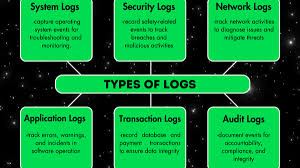Franchising Made Simple Steps to Build a Profitable Franchise Business

Franchising has become one of the most effective ways for entrepreneurs to expand their brand and for aspiring business owners to step into an established system with proven success. By following the right approach, franchising can create win-win opportunities for both franchisors and franchisees. Whether you are a seasoned entrepreneur or a first-time investor, understanding how to build a profitable franchise business is the foundation of long-term success.
In today’s competitive business landscape, many entrepreneurs rely on experts like throttllicensing.com to simplify the franchising process. From legal compliance to developing franchise strategies, professional guidance ensures that both franchisors and franchisees get the support they need to grow effectively. Having a strong framework not only increases profitability but also reduces risks associated with business expansion.
Understanding the Basics of Franchising
Before diving into the steps, it’s important to grasp the fundamentals of franchising. At its core, franchising is a business model where one party (the franchisor) licenses its brand, operational systems, and intellectual property to another party (the franchisee). In return, the franchisee pays fees and royalties while gaining access to a ready-made brand identity and business system.
This structure benefits both sides:
- Franchisors expand their brand presence without bearing the full financial burden of opening new locations.
- Franchisees enjoy reduced risks since they operate under an established business model.
Franchising is not limited to fast-food giants; it spans multiple industries such as retail, hospitality, fitness, and even professional services.
Why Franchising Works as a Business Model
Franchising has proven to be one of the most scalable and sustainable business models globally. Its popularity is rooted in several key advantages:
- Established Brand Recognition – Franchisees operate under a well-known brand, making it easier to attract customers.
- Proven Systems and Processes – From training to operations, franchisors provide a blueprint for success.
- Shared Marketing Power – National advertising campaigns and shared marketing initiatives benefit all franchisees.
- Reduced Risk – Unlike starting from scratch, franchisees benefit from proven business models.
- Scalability for Franchisors – Expansion through franchising allows brands to grow rapidly across multiple regions.
Steps to Build a Profitable Franchise Business
Building a profitable franchise business requires careful planning, execution, and ongoing support. Here’s a step-by-step guide:
Step 1: Develop a Strong Business Model
A profitable franchise begins with a successful business concept. Your model should be:
- Replicable – Easy to duplicate across multiple locations.
- Profitable – Demonstrating consistent financial success.
- Systemized – With clear processes for operations, staffing, and customer service.
- Market-Ready – Offering products or services in demand across various locations.
Step 2: Create a Franchise Business Plan
Your franchise plan serves as the foundation for growth. It should include:
- Market Analysis – Identifying opportunities and challenges in your industry.
- Financial Projections – Outlining expected revenues, expenses, and profit margins.
- Franchise Fees and Royalties – Defining how you will earn from franchisees.
- Training and Support – Detailing how franchisees will be trained and assisted.
A clear business plan not only attracts franchisees but also builds trust with investors and lenders.
Step 3: Ensure Legal Compliance
Franchising involves complex legal requirements. These vary by country but often include:
- Franchise Disclosure Documents (FDDs) – Providing transparent details about the business.
- Trademark Protection – Safeguarding your brand identity.
- Franchise Agreements – Clearly defining rights, obligations, and revenue structures.
Working with franchise consultants or legal experts ensures compliance and protects both franchisors and franchisees.
Step 4: Build Strong Training Programs
Training is a critical element of franchise success. Effective programs should cover:
- Operations Training – Day-to-day business processes.
- Customer Service Standards – Maintaining brand reputation.
- Technology Training – POS systems, scheduling, or other digital tools.
- Marketing Guidance – Local advertising strategies and social media support.
Well-trained franchisees are more likely to succeed and uphold brand standards.
Step 5: Establish Marketing and Branding Support
Franchisors must provide strong marketing support to help franchisees thrive. This can include:
- National Advertising Campaigns – TV, radio, or digital ads.
- Social Media Strategy – Templates and brand-approved content.
- Local Marketing Support – Guidance for community-level promotions.
- Ongoing Brand Development – Keeping the brand fresh and competitive.
Step 6: Provide Continuous Support
The relationship between franchisor and franchisee doesn’t end after opening day. Continuous support is essential:
- Operational Audits – Ensuring compliance with brand standards.
- Mentorship Programs – Pairing new franchisees with experienced ones.
- Regular Training Updates – Keeping franchisees updated on new products and systems.
- Communication Channels – Forums, meetings, and newsletters to maintain engagement.
Common Challenges in Franchising
While franchising offers immense benefits, it’s not without challenges. Being aware of these helps in overcoming them:
- Maintaining Consistency Across Locations – Ensuring all outlets deliver the same customer experience.
- Legal Complexities – Managing compliance across different regions.
- Conflict Management – Handling disputes between franchisors and franchisees.
- Recruitment of the Right Franchisees – Choosing partners who align with brand values.
- Adapting to Market Changes – Staying competitive in changing industries.
Key Traits of a Successful Franchisee
Not everyone is cut out to be a franchisee. The most successful ones share common traits:
- Strong Work Ethic – Willingness to follow systems and put in effort.
- Financial Discipline – Ability to manage budgets and cash flow.
- Customer-Centric Approach – Delivering top-notch customer service.
- Adaptability – Adjusting to new products, processes, and market shifts.
- Commitment to Brand Standards – Maintaining consistency and professionalism.
The Future of Franchising
Franchising continues to evolve with modern trends and innovations. Emerging opportunities include:
- Technology Integration – Using AI, apps, and automation in operations.
- Eco-Friendly Franchises – Businesses focused on sustainability.
- Service-Based Franchises – Expanding beyond food into education, cleaning, and health.
- Home-Based Franchises – Low-cost opportunities run from home.
- Global Expansion – Brands crossing borders into international markets.
Conclusion
Franchising is one of the most powerful ways to grow a business while helping entrepreneurs achieve financial independence. By developing a strong business model, ensuring legal compliance, offering comprehensive training, and providing ongoing support, both franchisors and franchisees can build long-term profitability.
With the right planning and expert guidance—such as that provided by specialists like throttllicensing.com—franchising can unlock doors to unlimited business growth. Whether you aim to expand your brand globally or invest in a proven business system, franchising remains one of the most rewarding paths in the entrepreneurial journey.




